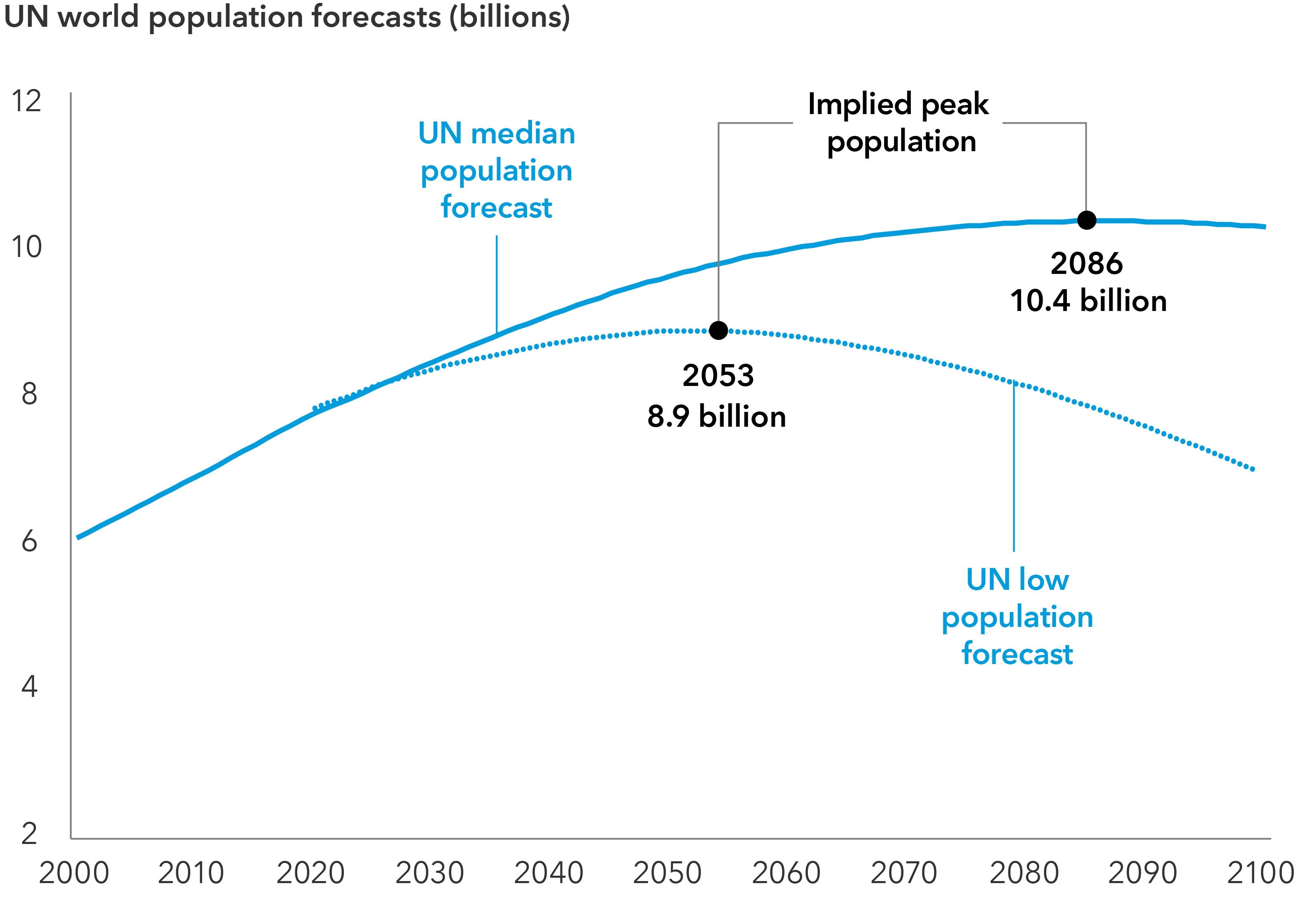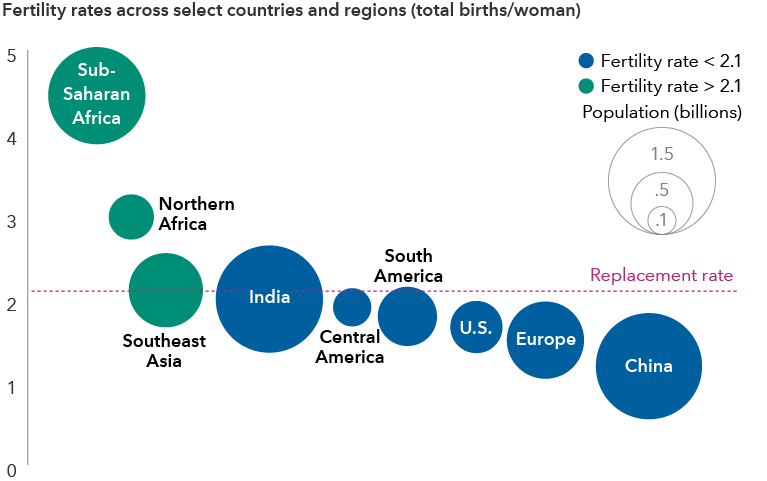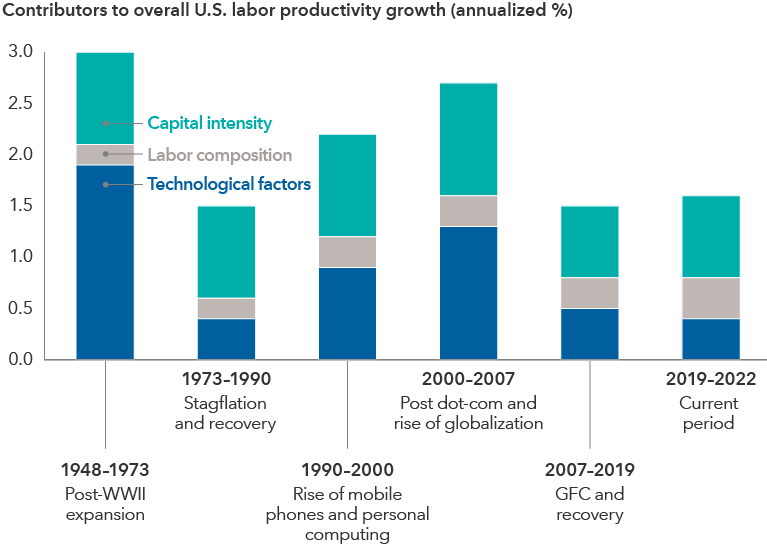How population decline could upend the global economy
admin 2024-05-30 16272
China recently joined the long list of countries that had more deaths than births in 2023, underscoring a declining population trend that could upend the global economy. Demographic changes have major implications.
The United Nations predicts the world will reach peak population around 2086, but I think that figure may be optimistic. One reason is because the pandemic-era baby bust in some countries may have worsened the decline, and the problem appears to be long-lasting. Even in certain African and Latin American countries, where birthrates are historically high, the number of newborns has dropped closer to the replacement rate of 2.1 children per woman. Given these trends, humanity’s population could peak around 2050.
Humanity’s population growth may peak earlier than projected

Sources: Capital Group, United Nations (UN) Population Division. Figures reflect UN population estimates for 2023, as of July 2022. Low population forecast reflects a fertility rate that is 0.5 births per woman lower than the median projections.
Crossing a demographic point of no return
But what does a planet with fewer people mean for society? It’s a position the modern world hasn’t been in, so we would be crossing a demographic Rubicon.
Demographics influence what people buy and a company’s revenue potential. From an economist’s perspective, it helps determine monetary policy and, ultimately, the well-being of each successive generation.
I prefer to look at countries individually because there are many idiosyncrasies, whether cultural or policy related. In the United States, demographic trends are favorable for growth compared to developed economies even though birthrates have dropped rapidly since the 1960s to the current level of 1.7%. That figure may be low, but it is higher than Europe, Japan and other developed economies. I think US population decline will be less severe, in part because immigration policies are more liberal. Data shows that immigrants tend to have more children.
Japan is likely the most studied example of a shrinking society. The country has seen its population fall off for several decades, and its experience shows how quickly that can snowball. Japan reported 20,000 fewer people in 2008, and that figure has since ballooned to 831,872 fewer people in 2023. Prime Minister Fumio Kishida called the trend “the gravest crisis our country faces.”
Most people live in countries with fertility rates below replacement level

Sources: Capital Group, United Nations (UN) Population Division. Fertility rates reflect latest estimates for 2023, published July 2022.
China’s population decline has just begun, but I suspect it will face challenges not unlike Japan. How the Chinese government responds, in terms of economic stimulus and productivity expectations, will be important. In some ways, China may be more vulnerable since its economic development is much lower than when Japan’s population started to shrink. China ended its one-child policy in 2016 and has since introduced financial incentives for couples to have multiple children, but so far it hasn’t helped.
I will not say it is impossible to reverse population trends, but many Nordic countries have tried and failed to stem the lowering tide of demographics. They have offered everything from financial incentives to child care programs, but these plans have barely moved the needle, if at all.
As a result of China’s population decline, countries that rely on it for trade, such as Australia and southeast Asian countries, could experience slower economic growth. But there are opportunities as well, since several of these emerging markets have better demographics and could offer incentives to bring supply chains home.
Declining population is negative for growth
Economists care about demographics for a reason. Put simply, the long-run economic growth rate of a country depends heavily on population growth, with the other piece of the puzzle being productivity, which measures worker efficiency. That is, if you have population growing at 2% and productivity at about 1%, a country’s gross domestic product is about 3%.
Sustained growth flows through to eventually increase income per person — an important indicator of the overall health of an economy. Over past generations, income has been growing for much of the world, alongside quality of life.
The obvious takeaway from population decline is fewer workers as more people retire. This can lead to an imbalance as government revenues from taxes fall and spending on retirees increases. When this happens, young people tend to leave that country or society, further exacerbating the problem.
Innovation can lead to productivity gains

Sources: Capital Group, Bureau of Labor and Statistics. Data last updated as of 11/21/2023.